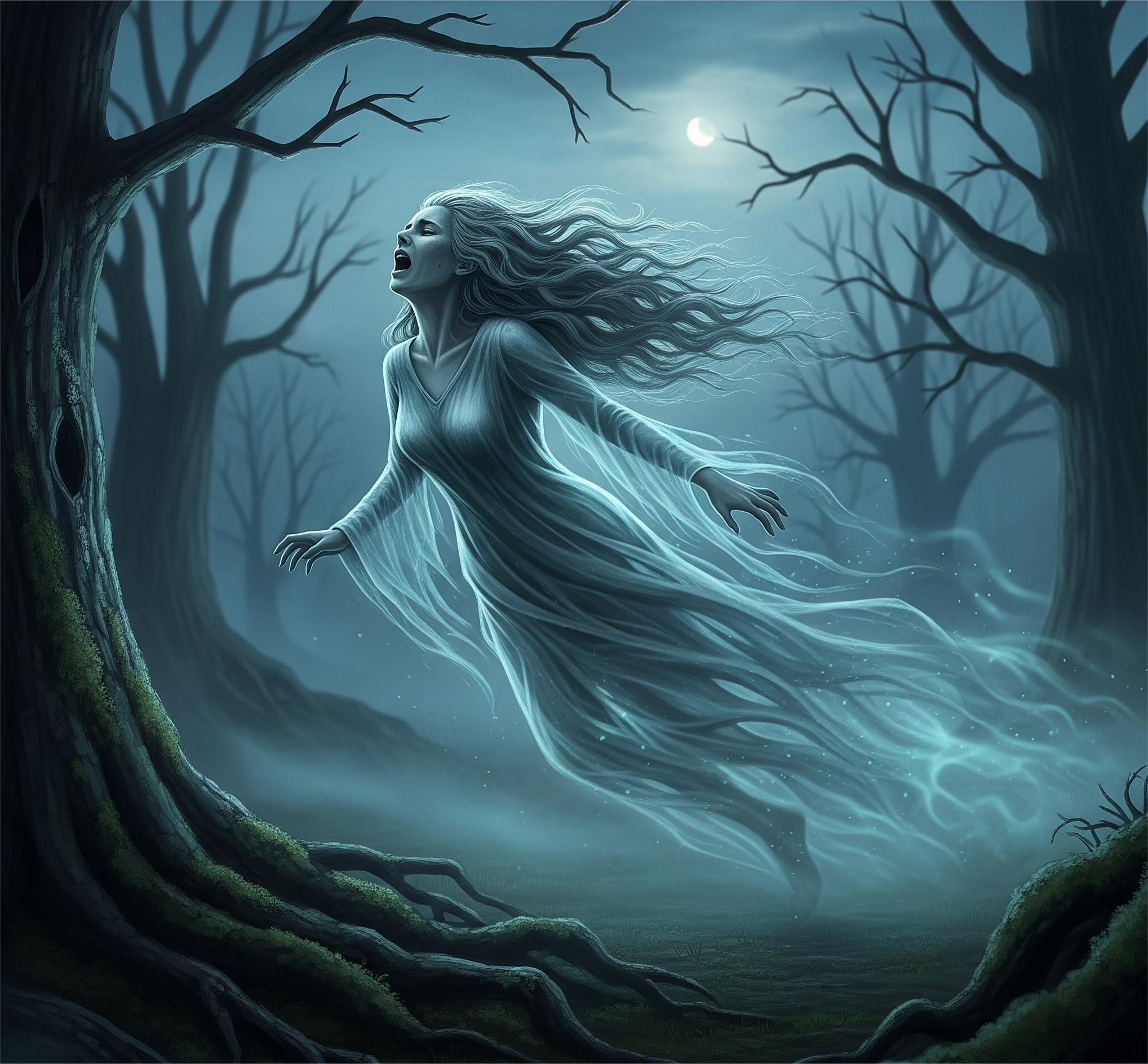In the shadowed hills of Ireland and across the moors of Celtic imagination, there lingers a ghostly figure whose cry chills the blood and stirs the soul: the banshee. More than a ghost or a ghoul, the banshee (from the Irish bean sí, meaning “woman of the fairy mound”) is a deeply rooted figure in Celtic folklore, known not for causing death, but for foretelling it.
Origins: A Spirit of the Sidhe
The banshee emerges from the rich tapestry of Celtic mythology, which teems with otherworldly beings known as the Aos Sí, or “people of the mounds.” These entities were believed to inhabit ancient burial sites and fairy mounds (sídhe), blurring the line between the world of the living and the realm of spirits.
The banshee is often described as a female spirit tied to noble Irish families, especially those whose surnames begin with “O’” or “Mac.” Her presence is not malevolent—she does not bring death—but instead warns of its approach. Her cry is a lamentation, echoing an ancient Celtic tradition of keening—a practice where women wailed in mourning at funerals.
Forms and Appearances: From Crone to Maiden
Descriptions of the banshee vary across regions, but she generally appears in one of three guises:
A wizened old woman with long white hair and red eyes from endless crying
A stately matron, veiled and robed in gray or green
A beautiful young woman, radiant and sorrowful, combing her hair by moonlight
These forms reflect the triple goddess archetype found throughout Celtic belief: maiden, mother, and crone. Her shifting appearance suggests that the banshee is not a single entity, but a type of spirit, possibly tied to ancestral matriarchs or female fairies tasked with mourning.
The Wail of the Banshee
The most infamous aspect of the banshee legend is her cry—a high-pitched, piercing wail that drifts across the night air. It is said to be unforgettable, evoking a deep sense of sorrow, dread, or inevitability.
In some tales, only the person fated to die hears her cry.
In others, entire households awaken to the banshee’s keening, knowing that death is near.
Occasionally, multiple banshees appear, wailing in unison—an omen of the death of someone particularly important.
This idea draws from the historical keeners of Ireland, women who were hired to mourn at funerals, often considered to have spiritual or mystical roles in helping the dead pass on. The banshee may be a supernatural extension of this tradition.
Not a Harbinger of Evil
Unlike malevolent spirits or grim reapers, the banshee is not evil. She doesn’t cause death or harm the living. Instead, she serves as a messenger, a bridge between the world of the living and the realm of the dead.
In many stories, she is even protective or sorrowful, as if she mourns the loss herself. Her connection to specific families reinforces this idea—some believed she was an ancestral spirit, watching over her descendants even in death.
Wider Celtic and European Connections
Though the banshee is most closely associated with Ireland, similar spirits appear across Celtic regions and even in parts of mainland Europe:
In Scotland, the bean nighe is a washerwoman spirit who cleans the bloodied clothes of those doomed to die.
In Wales, a similar figure known as the cyhyraeth or the gwrach y Rhibyn wails to warn of death.
In Brittany (France), the kanerez noz ("night singers") play a similar role.
These parallels suggest a shared Celtic belief in feminine spirits linked to fate, mourning, and the passage from life to death.
Modern Echoes and Cultural Impact
The myth of the banshee continues to thrive in literature, music, and pop culture. From gothic horror stories to video games and heavy metal albums, the banshee has become a symbol of supernatural mystery and inevitable fate.
However, in Ireland, she remains a figure of respect and unease—a relic of ancient belief still whispered about in rural areas and remembered in family lore.







